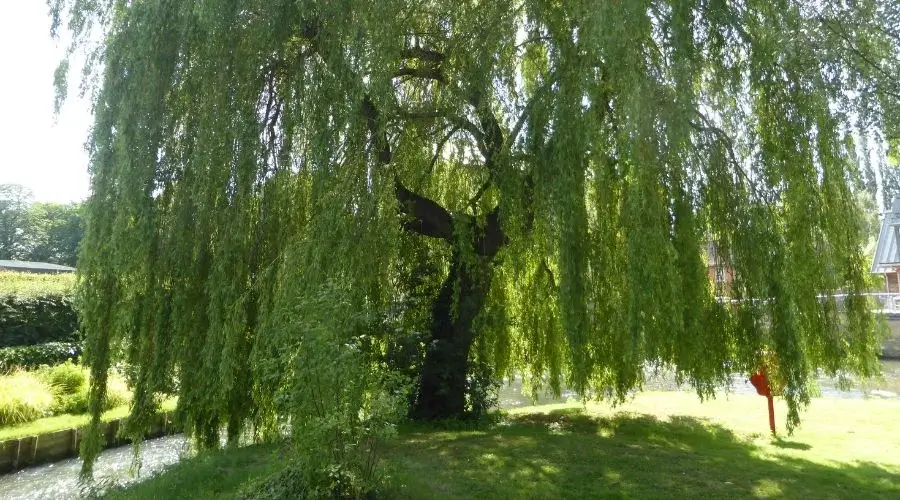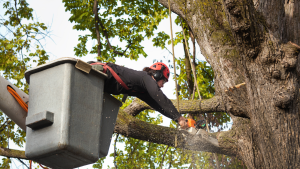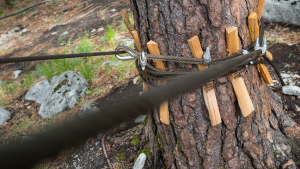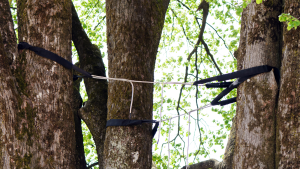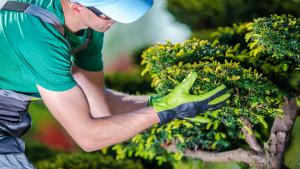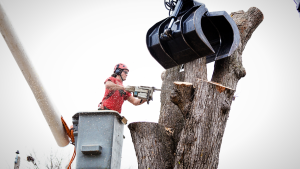Trees are a vital part of our environment, providing us with oxygen, shade, and beauty. However, not all trees have the same water requirements. Some trees are water-thirsty and thrive in moist environments, while others can withstand prolonged dry spells. In this article, we will explore the types of trees that require the most water and the unique characteristics that make them ideal for wetter landscapes. Joliet Tree Service can help guide you on tree selections that are right for your landscape goals.
1. Willows (Salix spp.)
Willow trees are known for their love of water and are often found near riverbanks, ponds, and wetlands. They have an extensive root system that seeks out water sources, making them excellent choices for stabilizing soil along water bodies. Willows can tolerate occasional flooding and have a high transpiration rate, which means they release a significant amount of water into the air, helping to maintain a humid microclimate around them.
2. Bald Cypress (Taxodium distichum)
Bald cypress trees are well-suited to areas with a high water table. They can even grow in standing water for extended periods, making them a popular choice for planting near swamps and marshes. Bald cypress trees develop “knees” or pneumatophores that protrude from the water and provide additional support for the tree.
3. Red Maple (Acer rubrum)
Red maple trees are versatile and can adapt to a range of soil conditions, including wetter ones. They thrive in swamps, riverbanks, and floodplains. While they are not exclusive to wet environments, they are well-equipped to handle excess moisture.
4. River Birch (Betula nigra)
River birch trees are naturally found along riverbanks and in wetlands. They can tolerate fluctuating water levels, making them an ideal choice for areas prone to seasonal flooding. River birch trees are known for their striking peeling bark and can add visual interest to wetland landscapes.
5. Weeping Willow (Salix babylonica)
Weeping willows are a classic example of a water-loving tree. Their graceful, pendulous branches and vibrant green leaves are a common sight near ponds and lakes. Weeping willows prefer consistently moist soil and are well-suited to areas with ample water sources.
6. Silver Maple (Acer saccharinum)
Silver maple trees are known for their rapid growth and adaptability to a variety of conditions. They often grow near rivers, streams, and swamps, where their roots can access abundant moisture. While they can thrive in wetter environments, they may require regular pruning to maintain their shape and prevent overcrowding.
7. Black Gum (Nyssa sylvatica)
Black gum, also known as tupelo, is a tree that thrives in wetlands and low-lying areas. Its brilliant fall foliage and ability to adapt to wet soils make it a popular choice for enhancing the beauty of marshy landscapes.
8. American Sycamore (Platanus occidentalis)
American sycamore trees are frequently seen along riverbanks and in areas with high moisture levels. They can tolerate occasional flooding and are recognized for their distinctive exfoliating bark.
Trees that require the most water play a crucial role in maintaining the ecological balance of wetland ecosystems. These trees not only provide habitat for wildlife but also contribute to the overall health of the environment by stabilizing soil, controlling erosion, and regulating water levels. If you have a water-rich landscape or are interested in creating a wetland area, consider planting some of these water-loving tree species to enhance the beauty and ecological value of your surroundings. However, it’s important to ensure that local conditions and regulations allow for the growth of these water-loving trees.
